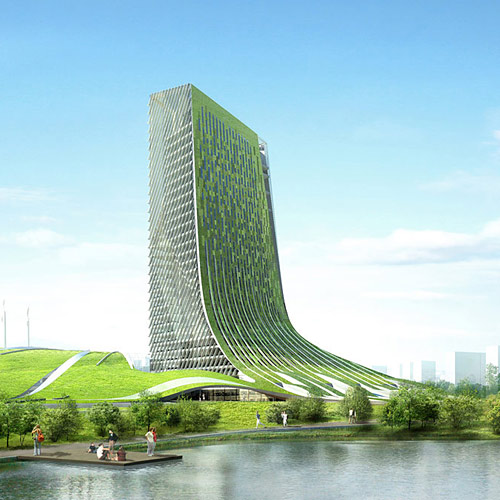
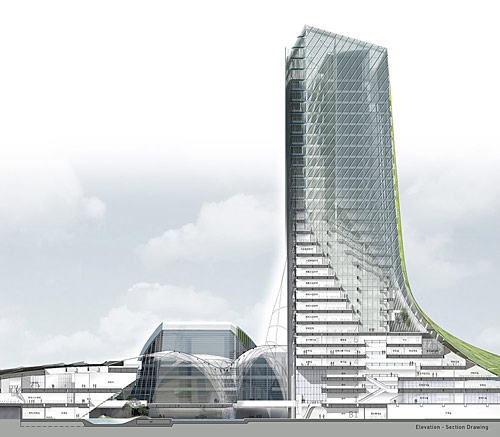
In 2009, the Korea Electric Power Corporation (KEPCO) announced a competition for its new headquarters to be built in a city near Naju, South Korea. H Associates proposal received 3rd place. 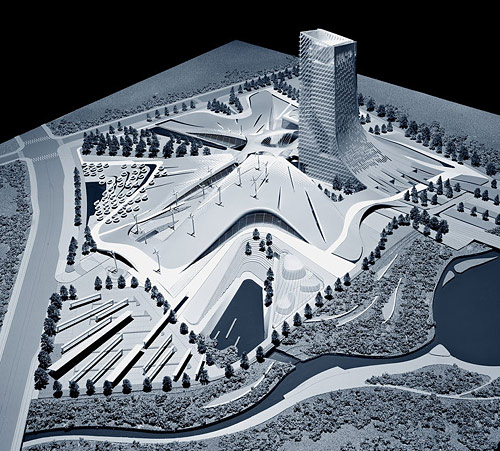
The new KEPCO headquarters, which would include nearly 120,000 square meters of office space and public ex¬hibition program, will constitute a major anchor point of this emerging city. KEPCO has mandated an ambitious program of objectives for the facilities with its vision to become a genuine Green Energy leader among the world’s utility corporations.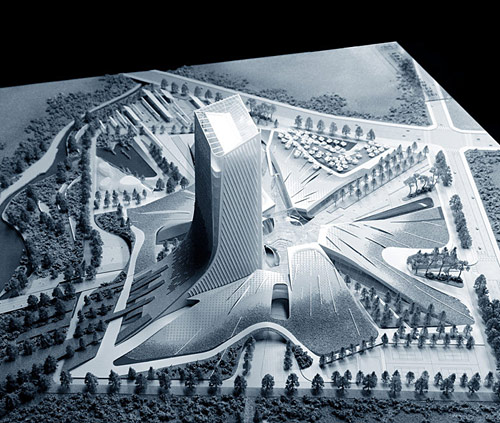
H’s design of a GREEN ENERGY THEME PARK focuses on the integration of landscape with building to create an experiential awareness of the green energy life cycle. This strategy challenges the segregated tower / podium / landscape hierarchy which dominates current office complex typologies. The design inverts the normative scheme to create a polycentric organization with an open civic space at the heart of the site. The podium mass is divided and dispersed into a series of sloped GREEN ROOFS that integrate with the landscape. This topographical strategy forms valleys that channel light and enhance air circulation while creating pedestrian friendly connections.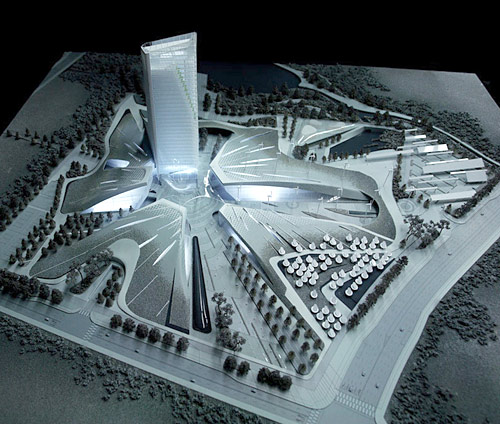
Emerging from the sloped landscaped podium is a 29 story tower that contains much of the office program for KEPCO. A HELICAL ATRIUM space extends from the central civic plaza and moves up the tower volume. This atypical atrium promotes building ventilation, natural light, and views. With the option to be open to the environment or completely sealed, the operable atrium buffers office space form harsh weather conditions as well as naturally ventilates the building during mild weather conditions. For the façade of the tower, each side of the tower is individually designed to accommodate orientation related conditions such as sunlight and wind. Various sun shading devices are unique on each side of the tower and a north side moss catch system naturally insulates the building. Solar collectors/panels of the building skin system and of the SOLAR FIELD harvest the sun’s energy while daylight sensors and smart control systems reduce energy waste.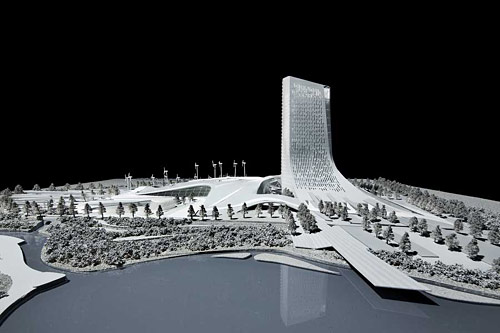
Atop of the landscape podium is a field of wind turbines that transforms strong westward winds into energy. The WIND VALLEY between the podium masses captures prevailing winds to circulate air into the open public spaces. This captured wind is collected at the base of the helical atrium and, due to increased pressure and the stack effect, is propelled vertically through the atrium. 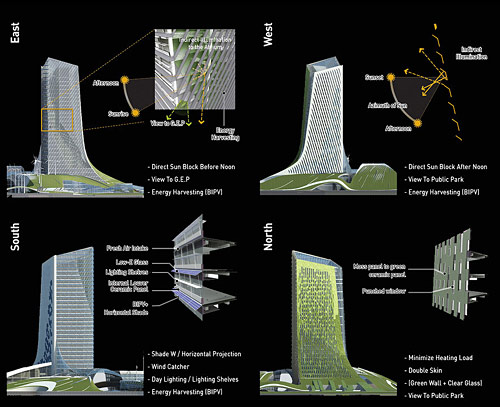
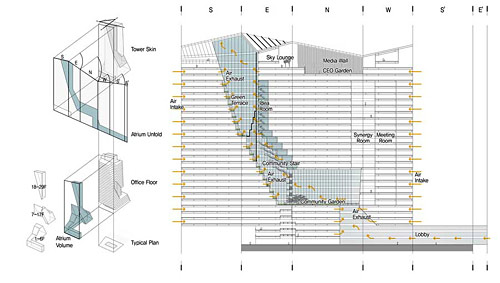
Water retention systems and green pavement parking prevent excessive runoff and waste. Rainwater is harvested, filtered, and treated through various features including RAIN FARMS, and the resultant grey water is reused for landscape irrigation and building plumbing. Geothermal systems are integrated into the periphery of the site and the green roofs further insulate the podium mass. The accumulation of these solar, wind, water and geothermal components comprise the GREEN ENERGY THEME PARK where visitors can experience and learn about the production of green energy from various natural energy sources.
Location: Naju, South Korea
Site Area: 149,370 sqm
Lot Coverage: 25,340 sqm
Built Area: 119,530 sqm
Building Height: 29 Stories + 1 Basement Level
Collaborating Architects: Haeahn Architecture
Sustainability / MEP Consultants: Cosentini Associates Chungyeon
H Associates









